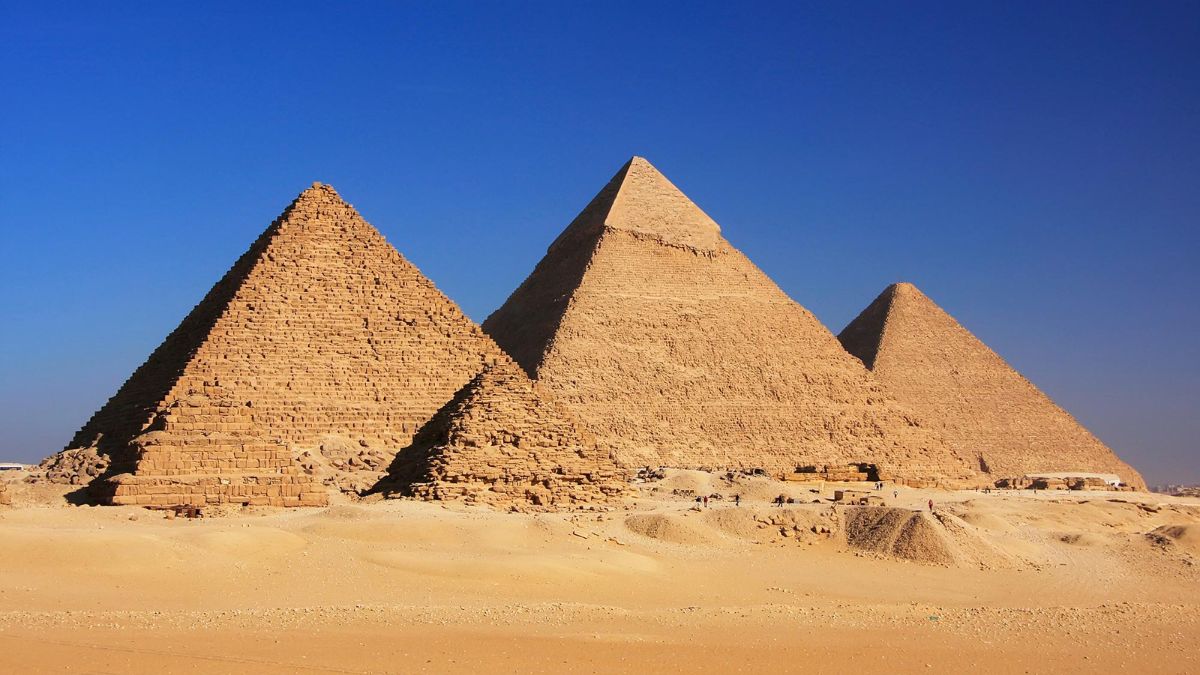For years, we’ve heard the same story: that the Egyptian pyramids were built by armies of workers dragging massive stone blocks up ramps under the blazing sun. Some even believe aliens lent a hand. But a new theory is making waves—literally. A team of French scientists now believes that the ancient Egyptians might have used water to lift the stones that built the pyramids.
That’s right. No slaves, no cranes—just smart engineering and a clever use of hydraulic power over 4,500 years ago.
Hypothesis
The idea comes from research on the Saqqara plateau, specifically the pyramid of Djoser, one of the oldest known pyramids, dating back to around 2680 B.C. French engineer Xavier Landreau and his team have proposed that the Egyptians may have carved out a vertical shaft inside the pyramid and used water pressure to float massive stone blocks upward.
Read Also- Martian Treasure – World’s Most Expensive Meteorite, Valued Over $4 Million, Is a Real Piece of Mars
It’s similar in concept to a hydraulic elevator. Fill a chamber with water, add a floatable platform or stone, and let buoyancy do the heavy lifting. Simple physics, right?
Ramps
Until now, the go-to theory was ramps. Historians imagined workers dragging stone blocks up long, spiraling ramps made of mudbrick and stone. But that idea always left a lot of questions.
Each block weighed between 1 and 3 tons. Moving them would have required teams of 30 or more men—plus a whole system just to get the blocks onto the rollers that helped move them. Not to mention, there’s little physical evidence left of these massive ramps.
Now, with this new water-based theory, the need for giant external ramps disappears. Instead, blocks could have been lifted from the inside, vertically, using a controlled system of water channels and shafts.
Crater
The inspiration for this theory? A volcanic crater. The researchers believe the pyramid’s design could mimic an inverted volcanic structure, using internal pressure (from water) to raise stones.
Nearby structures such as the Gisr el-Mudir and dry moats once thought to be symbolic may have served a very practical function: channeling and storing water for this hydraulic system. These could have operated like ancient reservoirs, feeding the internal lift system of the pyramid.
Engineering
This theory could change everything we thought we knew about Ancient Egypt. It would make the Egyptians pioneers in hydraulic engineering—long before such systems were documented in other civilizations.
We already knew they used canals and boats to transport materials, but building vertical water-lift systems? That’s next level. It means they may have understood and used advanced principles of fluid mechanics and pressure control long before the Romans or Greeks.
Suddenly, what seemed like an impossible feat starts to sound doable—with just water, gravity, and a bit of genius.
Tomb?
Another twist: no remains of Pharaoh Djoser have ever been found inside his pyramid. No sarcophagus, no mummified body, no burial symbols. Could the pyramid have been something more than a tomb?
Some archaeologists now suggest that it may have served as an experimental project to test building techniques—maybe even as a giant demonstration of their engineering abilities. If true, it changes how we view not only the pyramids but the entire purpose behind them.
Future
So, where does this leave us? With more questions—and the need for more digging. While the hydraulic theory is incredibly promising, it’s still just a theory. Confirming it will take more exploration, more studies, and possibly even new excavations.
Still, this idea has breathed new life into a very old debate. If the theory holds up, we’ll have to rethink what the ancient Egyptians were truly capable of—and stop giving aliens all the credit.
In the end, maybe the secret to building the pyramids wasn’t brute force or extraterrestrial help. Maybe it was just good old-fashioned water and brilliant minds.
FAQs
What is the new pyramid theory?
It suggests Egyptians used water to lift stones inside.
Who proposed the hydraulic theory?
French engineer Xavier Landreau and his research team.
What pyramid is being studied?
The step pyramid of Djoser in Saqqara.
Is there proof of this water system?
There are signs like shafts, channels, and dry moats.
Was the Djoser pyramid a tomb?
No remains were found, suggesting another purpose.


















